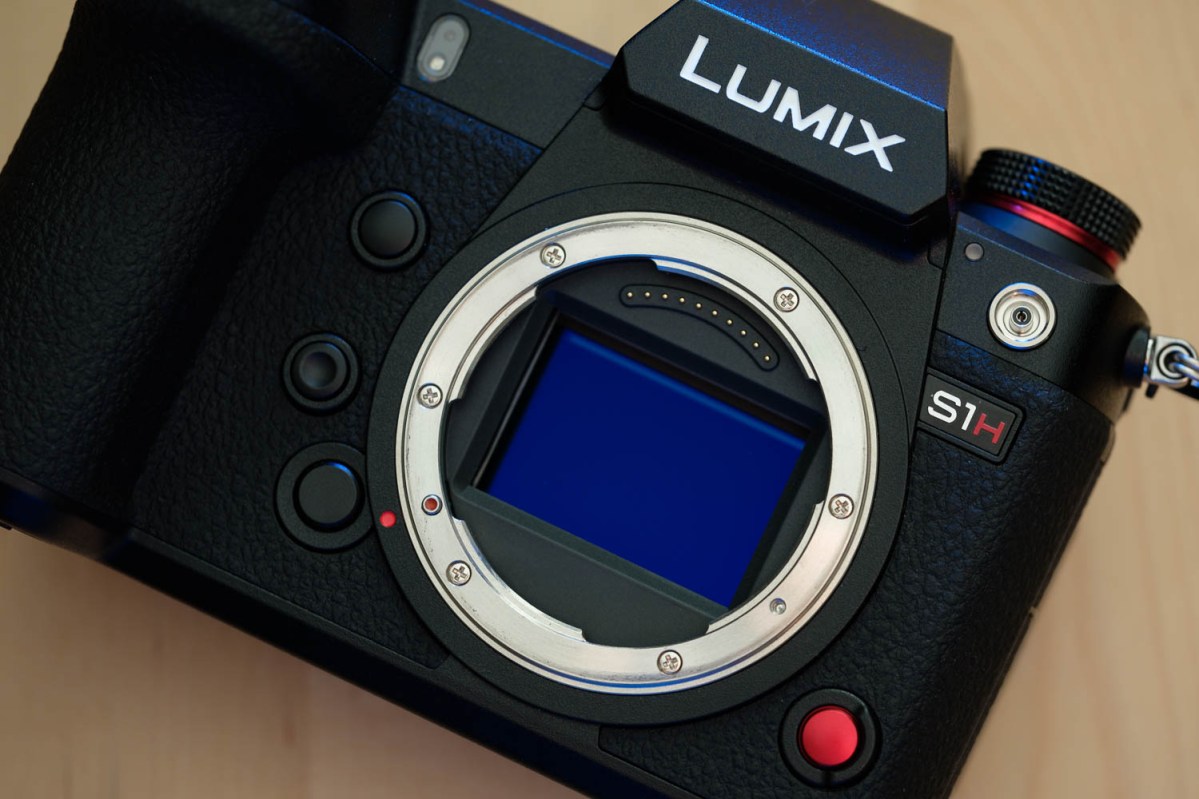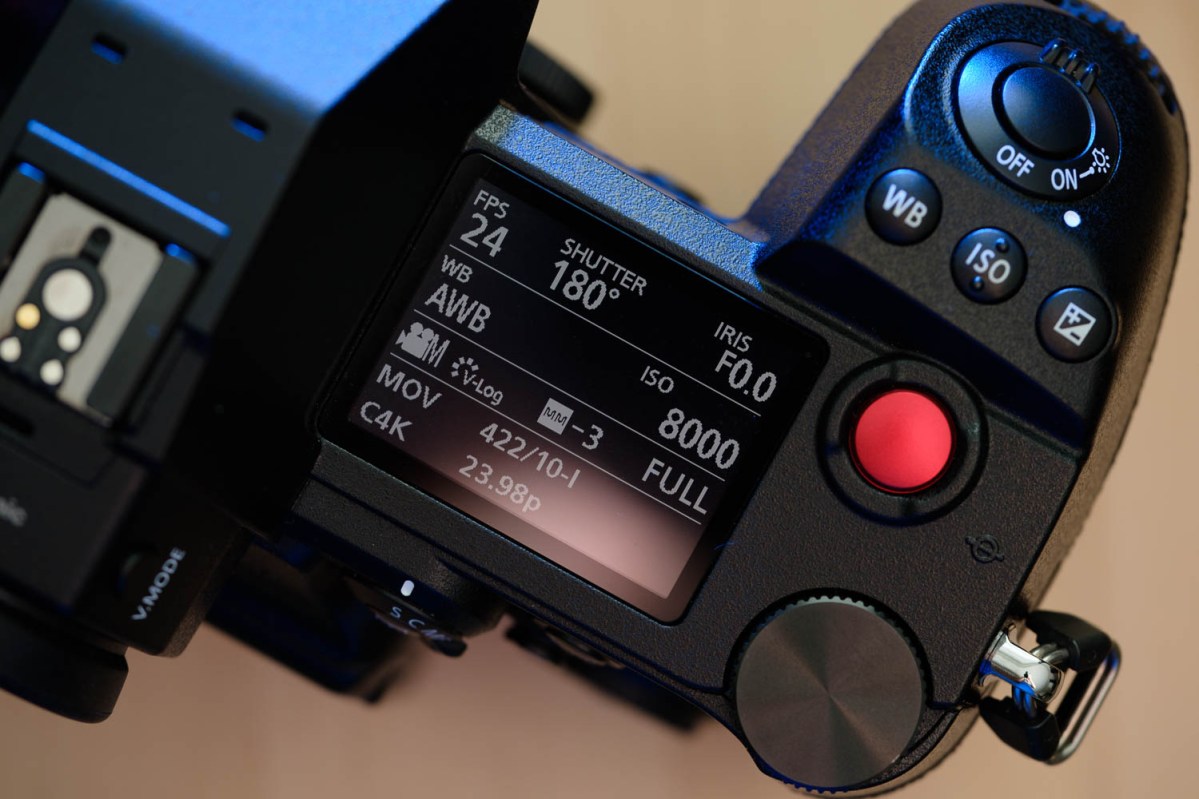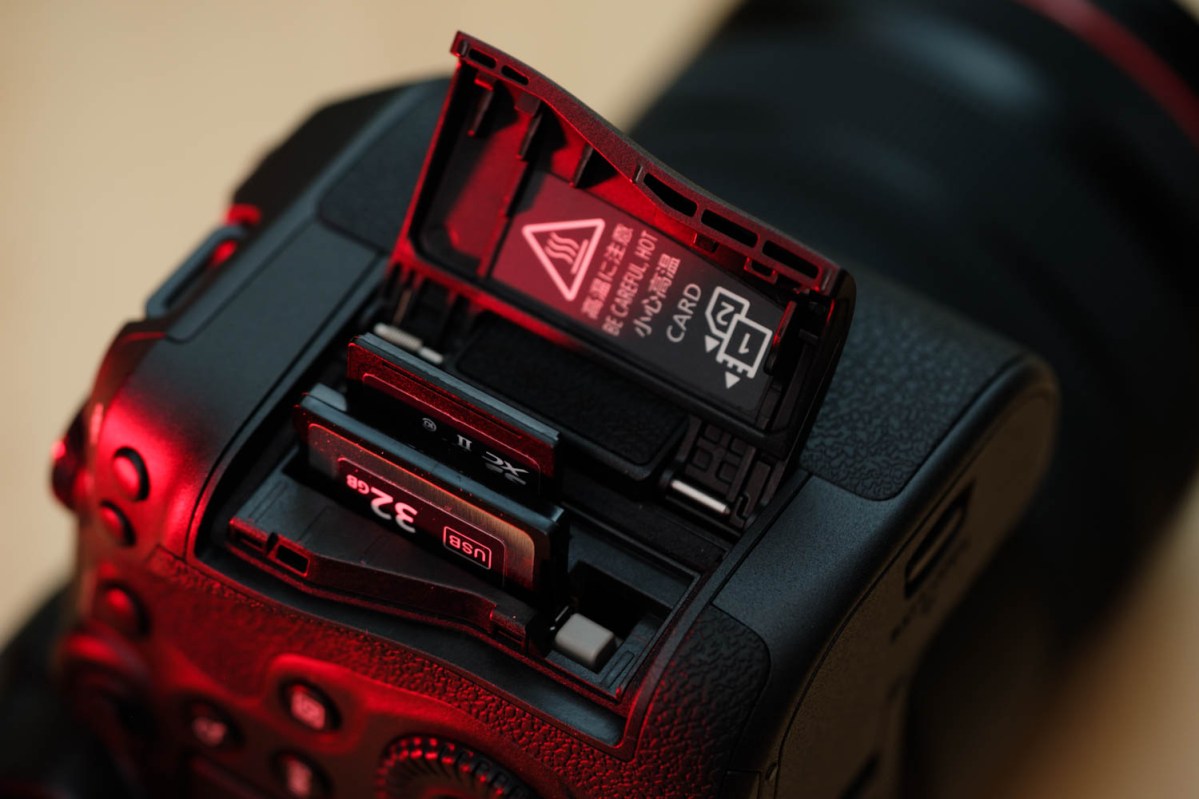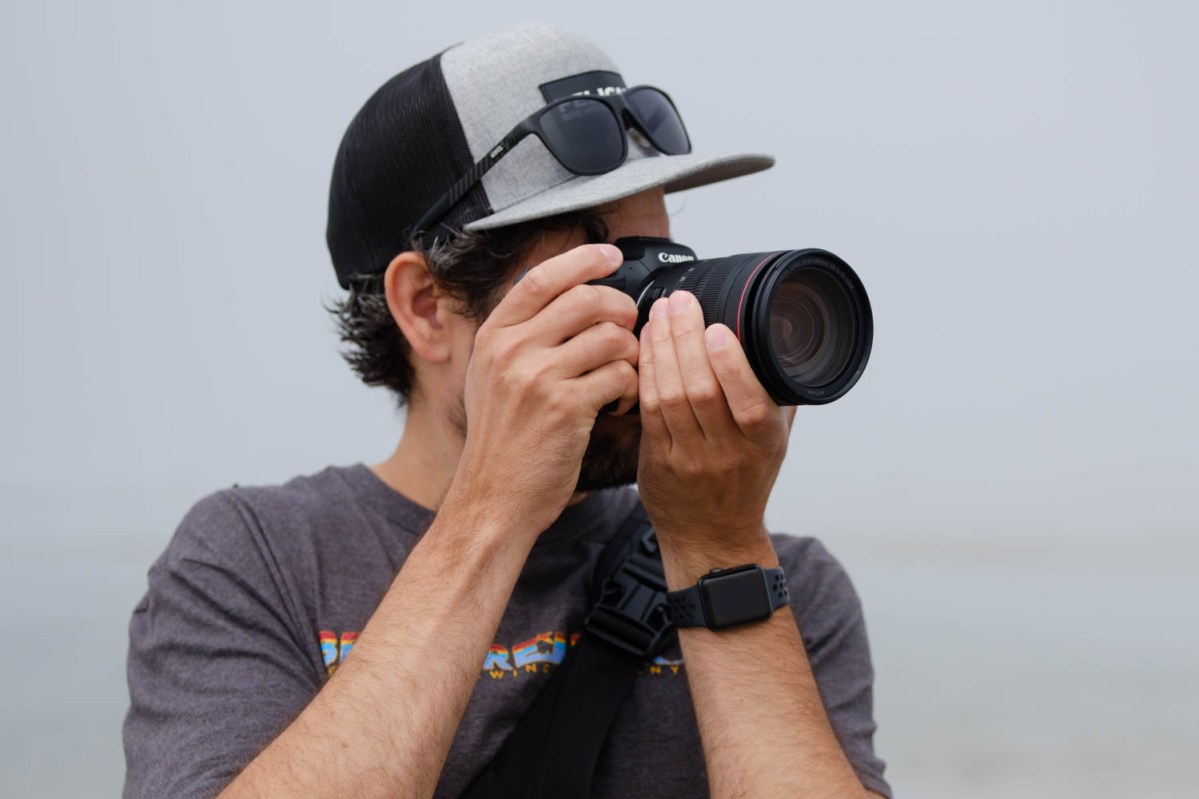The Canon EOS R5 and Sony A7S III are the two most talked-about cameras of summer, but don’t discount 2019’s Panasonic S1H. All three are full-frame mirrorless models, but where the R5 is a more “traditional” hybrid still camera that happens to shoot 8K video, the A7S III an S1H are built specifically with video in mind. And while it may be a year old, the S1H still holds some advantages over the other two.
The S1H and the A7S III are the true competitors here. The EOS R5 really should be targeting still photographers, but that messaging was muddied by Canon’s marketing prior to the camera’s release. But given that all three tout high-end video features and are priced in the $3,500 to $4,000 range, a comparison is natural.
At a glance:
Canon EOS R5
- 45MP full-frame sensor
- 8K/30p, 4K/120p
- Internal 12-bit RAW video
- Phase-detection AF
- One SD, one CFexpress Type B card slot
Sony A7S III
- 12MP full-frame sensor
- 4.2K/60p, 4K/120p
- 16-bit RAW output
- Phase-detection AF
- Dual SD/CFexpress Type A card slots
Panasonic Lumix S1H
- 24MP full-frame sensor
- 6K/24p, 5.9K/30p (full frame)
- 4K/60p (super 35 crop)
- 12-bit RAW output
- Contrast-detection AF
- Dual SD card slots
Sensor and video quality
Jumping right off the spec sheets is the difference in resolution. Each camera is full-frame, but the Canon EOS R5 stands out with its 45-megapixel sensor. The Panasonic S1H has 24 megapixels while the Sony A7S III has “only” 12.
The Canon’s sensor has exactly the number of pixels (8,192 horizontally) for DCI 8K video. The Sony’s sensor is just about perfectly tuned to deliver 1:1 4K (it can actually shoot 4.2K, or 4K with a 1.1X crop). The S1H splits the difference and can shoot 6K footage (technically, 5.9K in a standard 16:9 ratio, although full 6K is available at 3:2).

While the EOS R5 wins for sharpness as the only camera that can do 8K, shooting at such a resolution is impractical for most people due to the large files it creates and the fact that the camera will quickly overheat in this mode. While it can also shoot perfectly oversampled 4K footage processed from 8K, the R5 still overheats easily while doing so. At standard
The A7S III’s fewer but larger pixels should also equate to an advantage in low light, which is partially illustrated by the maximum ISO of 102,400, a stop above both the S1H and EOS R5. But the A7S III is the only camera of the bunch that can’t shoot DCI 17:9 aspect ratios — although it seems reasonable that Sony could implement this in the future via a firmware update.
The Panasonic S1H is in the goldilocks position when it comes to resolution, and offers even more aspect ratio choices than the EOS R5. It can shoot 6K 3:2, 5.9K 16:19, and 4K DCI 17:9. It also has a number of anamorphic modes available from a cropped, super 35 region of the sensor. However, it loses when it comes to frame rates. It can shoot
Compressed and RAW video options
The Canon EOS R5, Sony A7S III, and Panasonic S1H target professional customers and include a bewildering number of video compression options as a result. All three can record in 10-bit 4:2:2 color with flat log profiles suitable for color grading. Each also offers the option for all intra-frame (All-I) compression, which treats each individual frame like a still image rather than relying on leading and trailing frames to help with the compression. All-I is preferred by editors as it is easiest to work with on a computer, but it does require higher bitrates to achieve the same level of quality as standard inter-frame compression.
The EOS R5 All-I bit rates vary greatly depending on resolution, with 8K consuming up to 1,300 megabits per second (Mbps) at 24 or 30 fps. Lower resolutions will require significantly less data, with the exception of 4K/120, which takes up 1,800Mbps. The Sony A7S III doesn’t offer All-I compression at

The S1H tops out at 400Mbps for 4K/24p or 30p. All-I compression is not available for
And if you’d rather bypass compression entirely, all of these cameras allow you to do so. While the EOS R5 lets you record 12-bit RAW video internally, RAW is only available at 8K resolution with no compression options nor the ability to send those raw files to an external recorder. This means working with RAW on the R5 may be impractical, and even problematic as you will run into the heat limits, something an external recorder would have at least helped with. Additionally, the uncompressed RAW video is going to really tax your edit machine, furthering the argument that 8K on the Canon is impractical for a majority of cases.
Neither the Panasonic S1H nor the Sony A7S III can record RAW internally, but both can output RAW over HDMI, which can be recorded in the Apple ProRes RAW format with an Atomos Ninja V recorder. In this mode, the A7S III sends a 16-bit signal whereas the S1H is limited to 12-bit. That might sound like a striking difference, but keep in mind that footage from both cameras will be recorded as 12-bit Apple ProRes RAW, so the difference may not be that visible in practical use cases. The S1H can also output its full-width 5.9K resolution in RAW, which will give it a sharpness advantage over the A7S III.
Design
While these are all hybrid mirrorless cameras, their designs couldn’t be more different. At 2.3 pounds, the S1H is the heaviest of the bunch and almost a pound heavier than the A7S III (1.5 pounds). The EOS R5 is in the middle at 1.62 pounds.

The S1H’s bulk isn’t put to waste, however. It incorporates a vented cooling compartment with a fan between the sensor and the LCD monitor. All those overheating problems with the Canon? You won’t find them here — and the S1H is still weather-sealed, to boot. You can see the effect of this on the spec sheet: The S1H features “unlimited” recording, whereas Sony claims the A7S III won’t be heat limited for at least one hour at 4K/60. Both of these specs are very good — and well above the Canon EOS R5’s limit of about 30 minutes for
Functionally, the Panasonic’s larger body makes room for more physical controls and a large secondary display on the top plate, which shows all of your settings at a glance. The Canon doesn’t quite have the same level of direct access control, and its smaller top LCD isn’t up to the same standards — but at least it’s there. The Sony does not have a top LCD.
All three cameras have excellent electronic viewfinders, but the Sony does win here with its 9.44-million-dot resolution. The S1H and R5 share a 5.7-million-dot EVF that is certainly no slouch, though. Those cameras also have higher-resolution rear LCD screens at over 2 million pixels, where the A73 III’s has just 1.44 million.
Storage media
All three cameras offer dual memory card slots, but each does so differently. The S1H is the most traditional, with dual SD cards; the A7S III can accept either SD or new CFexpress Type A cards in both slots; the EOS R5 has one SD and one CFexpress Type B slot.

CFexpress Type A cards are smaller than the Type B variant and physically similar enough to SD cards that Sony was able to design a slot that accepts both media types. CFexpress Type A is faster than SD, although slower than the CFexpress Type B used by the Canon. CFexpress Type A is also not produced yet by anyone other than Sony, and the memory card’s price is still a mystery at the time of publication.
In both the S1H and A7S III, a V90-rated SD card is sufficient for any recording mode, so the A7S III’s CFexpress cards will mostly come in handy for offloading footage faster after a shoot. On the Canon, the higher bitrates of 8K and 4K/120p video require a CFexpress Type B card.
Autofocus and stabilization
Sony has long been a leader when it comes to mirrorless focusing systems, but Canon has caught up with the EOS R5. Both feature on-chip phase-detection, an advantage over the contrast-detection-only autofocus in the Panasonic S1H. Phase-detection is “smarter” than contrast-detection in that it not only knows when an object is out of focus, but whether it is front- or back-focused and by how much. This leads to faster, smoother focus changes without “hunting.”
But the S1H isn’t bad, per se, and Panasonic’s autofocus doesn’t use run-of-the-mill contrast-detection. It uses a technology called Depth from Defocus, which takes known blur characteristics about the attached lens to inform the camera about how much an object is out of focus and in what direction, similar to phase-detection. While this system can be very fast, it tends to cause problems in continuous autofocus situations as it has to constantly sample the focus at slightly different points to provide the data it needs to operate. In video, this can lead to distracting “breathing” in the footage. It’s not a problem in every scene, but it is one potential drawback.
As for stabilization, all three cameras feature 5-axis sensor-shift systems that work in conjunction with compatible stabilized lenses for even better performance. The Sony A7S III is rated at 5.5 stops of shake reduction, the Panasonic S1H scores a stop higher at 6.5, and the Canon EOS R5 even higher at 8 stops.
However, that spec is of most use to still photography — for video, stabilization isn’t about shooting slower shutter speeds, but smoothing out the shakiness from hand-holding the camera. All three will offer a noticeable advantage here over non-stabilized cameras. Historically, Sony’s stabilization has not been quite as good as Panasonic’s, and Canon has surprised with the R5’s stabilization appearing to take it even yet another step further from there.
Audio

In a video camera, audio is often as important as the video itself. The Canon EOS R5, Sony A7S III, and Panasonic S1H all have the basics covered with both standard 3.5mm headphone and microphone jacks. However, the A7S III and S1H take things a step further by offering XLR adapters, which let you connect two professional XLR microphones straight to the camera. The Sony also allows for four discrete audio channels to be recorded in-camera, something rarely seen outside of the cinema camera world.
As photography cameras
It’s hard to ignore the difference between the Canon EOS R5’s 45 megapixels, the Panasonic S1H’s 24, and the Sony A7S III’s 12. The Sony certainly looks like the loser here, but depending on your needs, 12MP may be plenty. If, for example, you only share images to the web and social media, that’s more than enough resolution — provided you don’t need to crop too much. When it comes to prints, however, the EOS R5 will definitely have an edge.

And even with all that resolution, it’s also the faster camera, able to shoot up to 20 frames per second at full resolution using the electronic shutter, or 12 with the mechanical shutter. More importantly, continuous autofocus is available at any speed, and thanks to high-performance of CFexpress Type B, you can shoot 180 RAW images in a burst without slowing down. The A7S III tops out at 10 fps, while the S1H maxes out at 9 — but only 6 with continuous AF.
The higher-rated image stabilization of the Canon could be an advantage for stills, although in our experience, we felt the 8-stop rating was overly generous and real-world performance will likely always be less.
The EOS R5 is the only camera in this bunch that really targets still photographers and therefore outclasses the A7S III and S1H in this case. However, if photography is your primary focus, both Sony and Panasonic have cameras that are better suited for the task. Check out the Sony A7R IV or Panasonic Lumix S1R, both of which beat the EOS R5’s resolution, if not its speed or video features.
Conclusion
There’s no clear winner here, but for 4K video, it’s hard to argue against the Sony A7S III and its high-frame-rate options that won’t cause the camera to quickly overheat. It offers both
However, if resolution is more of what you need, this is where the Panasonic delivers. The S1H’s ability to not only shoot at up to 6K, but also with a 3:2 aspect ratio, allows for more flexibility to crop and reframe in post, a feature that will likely appeal to some professional filmmakers and editors. No, it’s not the EOS R5’s 8K, but video pros will be better off with a 6K camera that doesn’t constantly overheat than an 8K camera that seemingly always does.
But the Sony wins in another important area: Price. At the time of writing, the Panasonic S1H is still about $4,000, the Canon EOS R5 $3,900, and the A7S III $3,500. Opting for the Sony would leave you with a sizable chunk of change that could go toward a nice lens, external recorder, tripod, or other video accessories.
Editors' Recommendations
- Smaller and cheaper, the full-frame Lumix S5 is exactly what Panasonic needed
- Sony’s A7S III is the ultimate 4K video camera, five years in the making
- After years of waiting, Sony A7S III may arrive this summer
- Canon EOS R5 is everything the R isn’t, thanks to stabilization, 8K, dual slots
- Canon EOS-1D X Mark III brings stunning stills and RAW video to an impressive DSLR



